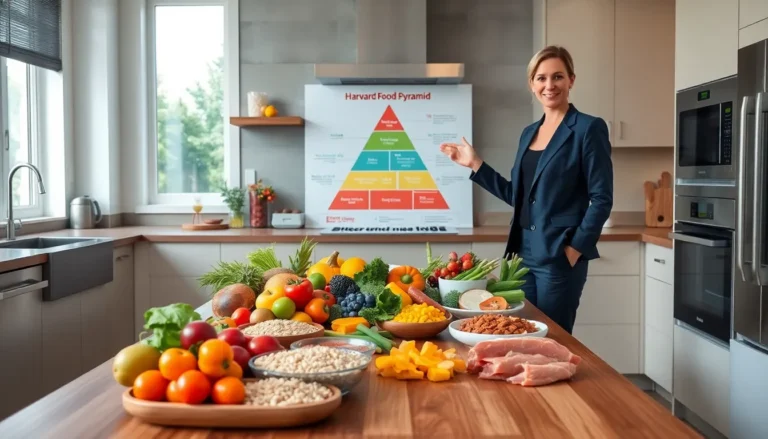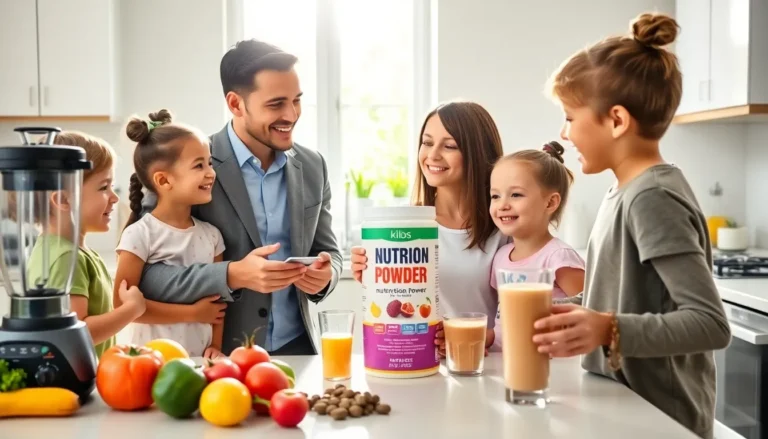Table of Contents
ToggleImagine a world where the secret to a superhero’s strength lies not in a lab but rather on the dinner plate. Yes, you guessed it, protein. For a 12-year-old, this nutrient plays a crucial role in fuel and growth. But, how much protein does a young hero really need? Is it a chicken breast-sized portion or more like a side of bean tacos? Let’s immerse, uncover the facts, and perhaps laugh a bit along the way.
Understanding Protein Needs During Growth

At the heart of child development is a crucial nutrient: protein. As children approach their teenage years, they experience growth spurts that require additional energy and nutrients. Protein helps with building muscles, repairing tissues, and even supporting hormonal changes. During this transformative phase, their bodies reshape, which is where adequate protein intake becomes essential. In fact, experts indicate that protein isn’t just about muscles: it also contributes to enzyme function and overall health, making it a vital element in daily nutrition.
Daily Protein Recommendations for 12-Year-Olds
According to nutritional guidelines, a 12-year-old should aim for about 34 grams of protein per day. This recommendation can vary slightly based on an individual’s activity level and specific health considerations. For active children, protein needs may be a tad higher. To put it in perspective, that’s roughly equivalent to four ounces of chicken or about eight eggs spread out over the day. So, whether it’s breakfast omelets, packed lunches with turkey slices, or after-school snacks featuring yogurt, there are various ways to hit that protein mark.
Factors Influencing Protein Requirements
When calculating how much protein a child should consume, it’s key to consider several influencing factors. First, activity level strikes a major chord, athletic kids, who run, jump, and play like there’s no tomorrow, often need more protein to fuel those energy-burning escapades. Also, growth spurts can throw a wrench into simple calculations: a rapidly growing child might find themselves suddenly requiring more protein. Gender differences can also come into play: as girls and boys mature, their respective needs may shift slightly. Finally, health conditions, food allergies, or dietary preferences (like vegetarianism) should be considered, as they can greatly affect protein sources.’
Sources of Protein for Children
Not all protein sources are created equal. For children, variety is the spice of life when it comes to protein. Animals provide high-quality proteins, frequently found in foods like lean meats, fish, and poultry. But, plant-based proteins shouldn’t be overlooked, think beans, lentils, and tofu. Dairy products, like cheese and yogurt, also serve as excellent protein sources, while nuts and seeds add both protein and essential fats. Mixing it up ensures they get a balance of amino acids, vital for their growth and development.
Health Benefits of Adequate Protein Intake
Sufficient protein intake comes packed with benefits. For starters, it boosts muscle strength and health. Just imagine a superhero, only stronger with every bite of chicken or bean. Besides muscles, protein plays a role in immune function, meaning kids who consume adequate protein might bounce back more quickly from colds. That’s not all: it also keeps them feeling full longer, assisting in weight management. In a world filled with sugary snacks, a healthy protein intake helps maintain energy levels, no more post-lunch slumps for our young explorers.
Potential Risks of Insufficient or Excess Protein
While protein is essential, balance is key. Too little protein might hinder a child’s growth, resulting in slower development or muscle weakness. On the flip side, excessive protein intake can strain the kidneys and can divert essential nutrients from their diets. A diet too high in protein can also lead to children feeling too full to consume other vital nutrients, vitamins, minerals, and fiber. This is where moderation and understanding protein sources come into play.
Practical Tips for Meeting Protein Needs
Ensuring that a 12-year-old gets enough protein doesn’t have to be rocket science. Here are some simple tips: 1. Be adventurous: Encourage trying various protein sources. Mix meat, beans, and dairy in meals. 2. Snack smart: Swap chips for edamame or yogurt. Protein-rich snacks can double as delicious treats. 3. Plan meals: Try to include a protein source in every meal. 4. Stay informed: Understanding the protein content in foods helps make better food choices. 5. Fun recipes: Get kids involved in cooking: making protein-packed wraps or smoothies can enhance their relationship with healthy eating.







